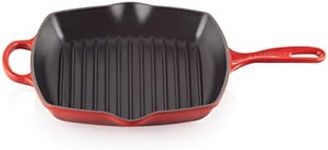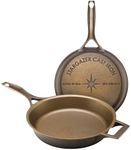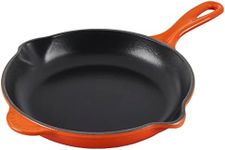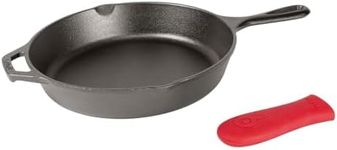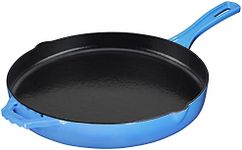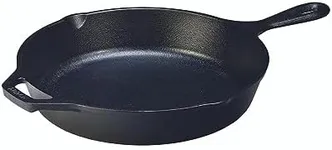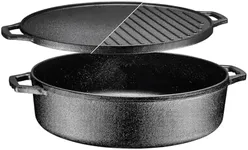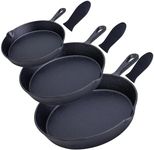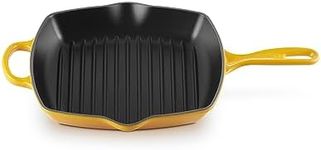Buying Guide for the Best Cast Iron Pans
Choosing the right cast-iron pan can make a big difference in your cooking experience. Cast-iron pans are known for their durability, heat retention, and ability to develop a natural non-stick surface over time. When shopping for a cast-iron pan, it's important to consider how you plan to use it, how much food you typically cook, and how comfortable you are with maintenance. Understanding the key features will help you pick a pan that fits your needs and cooking style.Size (Diameter)The size of a cast-iron pan is usually measured by its diameter, which determines how much food you can cook at once. Smaller pans (6-8 inches) are great for single servings, eggs, or small side dishes. Medium pans (9-10 inches) are versatile for most households and can handle meals for two to four people. Larger pans (12 inches or more) are ideal for families or when cooking bigger portions. Think about how many people you usually cook for and what types of dishes you want to make to choose the right size.
WeightCast-iron pans are heavier than most other types of cookware, which helps them retain heat but can make them harder to handle. Lighter pans are easier to lift and move, especially when full, but may not hold heat as well. Heavier pans offer better heat retention and even cooking but can be challenging for some people to maneuver. Consider your comfort with lifting and handling heavy cookware when deciding on the weight that suits you.
Handle DesignThe handle design affects how easy it is to grip and move the pan. Some pans have longer handles for better leverage, while others have shorter or even two handles (one on each side) for easier lifting. If you have smaller hands or limited strength, look for pans with helper handles or ergonomic grips. The right handle design can make a big difference in your comfort and safety while cooking.
Pre-seasoned vs. UnseasonedSeasoning is a layer of oil baked onto the pan to create a natural non-stick surface and prevent rust. Pre-seasoned pans come ready to use, which is convenient for beginners or those who want to start cooking right away. Unseasoned pans require you to season them yourself before use, which can be a rewarding process if you enjoy customizing your cookware. If you want less maintenance upfront, go for pre-seasoned; if you like the idea of building your own seasoning, unseasoned might be for you.
Depth and Sidewall ShapeThe depth and shape of the pan's sides affect what you can cook. Shallow pans with sloped sides are great for frying and flipping foods, while deeper pans with straight sides are better for braising, baking, or dishes with sauces. Think about the types of recipes you enjoy—if you like making stews or deep-dish meals, a deeper pan is useful; for searing and sautéing, a shallower pan works well.
Surface TextureSome cast-iron pans have a smoother cooking surface, while others are rougher. Smoother surfaces can make it easier to develop a non-stick layer and are easier to clean, while rougher surfaces may take longer to season but can eventually become just as non-stick. If you want a pan that’s easier to use right away, look for a smoother surface; if you don’t mind a bit of extra seasoning work, surface texture is less critical.

